JWF Fund 2016
Japan Water Forum (JWF) Fund managed through fees from corporate and individual members and donations is the initiative that supports grass-roots organizations to address water-related issues in developing countries. 2016 is the 12th year since its establishment in 2005.
There were 560 applications from 45 countries for JWF Fund 2016 calling. As the result of selection, we have decided to provide grants for 6 projects from 5 countries.
Out line of calling for JWF Fund 2016
- Application Period: 1 June to 31 July 2016
- Eligible countries: The least developed countries, Other Low-income Countries and Lower Middle-income Countries/Territories in “THE DAC LIST OF ODA RECIPIENTS Effective for reporting on 2014, 2015 and 2016 flows” by OECD (89 countries)
- Number of the Applications: 560 projects from 45 countries
- Selected projects: 6 projects, 5 countries; Togo (1), Madagascar (1), Tanzania (1), Pakistan (1), and India (2)
Report
JWF Fund 2016 Final report (PDF)
Recipients of JWF Fund 2016
1.Construction of 1 shallow well, 1 ecosan toilet and 1 hand washing facility, and holding of 3 training in WASH programs in the community of Lavié-Apedom (Togo)
Outline of the project
・Organization: CHARITÉ CHRÉTIENNE POUR PERSONNES EN DÉTRESSE (CCPD) (#015)
・Project title: Construction of 1 shallow well, 1 ecosan toilet and 1 hand washing facility, and holding of 3 training in WASH programs in the community of Lavié-Apedom
・Country/Area: Togo/Plateaux Region
・Project period: November 2016 to April 2017
・Number of beneficiaries (Direct and Indirect): 290 people (100 women, 55 men and 135 children) and 525 people
・Cost: 2,200 USD (JWF Fund 1,000 USD, contributions from local residents 918 USD and CCPD 282 USD)
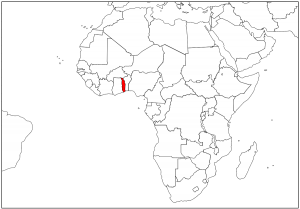 |
| Togo |
Background
Water and sanitation in the area is in a difficult situation because there is neither a water supply system nor a sanitation facility. People fetch water from ponds and defecate in the open. One particular problem of the area is that the groundwater level is to the same as the ground surface. When it rains, water flows into yards roads and open aqua privy. Contaminated water are soaked into groundwater and it causes pollution of groundwater as well as water points. The environment becomes the breeding ground for diseases to spread easily. The lack of access to clean drinking water and proper sanitation facility creates a significant amount of illnesses and deaths every year. The area had cholera epidemics several times which caused more suffering and deaths among women and children who are the most affected. Exposed groundwater sources are contaminated in many places and there is no safe source of water for people to get clean water for their daily use.
Outputs
1) 1 shallow well was constructed
2) 1 ECOSAN toilet was constructed
3) 1 hand washing facility was constructed
4) Water committee for maintenance was established
5) 3 workshops on water and sanitation were held
Because of these activities, the people in the Lavié-Apedome community could make use of clean water and a sanitation facility so that reduction of diseases and deaths caused by unhealthy water and environment can be expected.
Voice from beneficiaries
- Ms. Amenyo, Pupil of primary school
I and my younger brother live with our grand-mother. Before the project, I used to wake up early every morning, walk a long distance to fetch water from the pond. Every day, I arrived at school late and tired. But now that we got a well, collecting water is no more a burden. Water is available at any time. Indeed, this well is a special gift to me! Thanks to CCPD and JWF! - Mr. Nokplim, Teacher of primary school
Last year around this time, a dozen of students dropped out. They were irregular to school due to sickness or always came late and felt asleep in class. Now, with this well, parents do not keep their children at home for collecting water, especially girls. As a result, there is an improvement in school attendance. I was trained as a health promoter and am educating students about personal hygiene and how to keep the surrounding of the school and homes clean. I am so grateful to JWF for their support. May JWF continue to grant CCPD support for other communities’ sake! - Mr. Kafui, Community mason
Access to trainings, improved sanitation and safe and affordable water provides the chance of broader future opportunities to us. Working with Pastor Yawo, CCPD Director, being a volunteer was so exciting. I have so much been empowered. May God bless CCPD! Long live JWF!
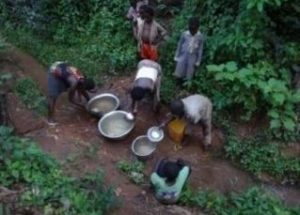 |
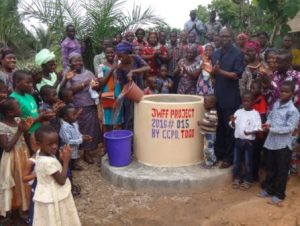 |
| Village people fetching water from pond | Constructed well with village people |
2. Community Led Water & Hygiene Promotion Project in Tarkha village, UC Haji Zai , District Charsadda, KPK Province-Pakistan (Pakistan)
Outline of the project
・Organization: Human Development Promotion Group (HDPG) (#168)
・Project title: Community Led Water & Hygiene Promotion Project in Tarkha village, UC Haji Zai , District Charsadda, KPK Province-Pakistan
・Country/Area: Pakistan/Charsadda
・Project period: November 2016 to February 2017
・Number of beneficiaries (Direct and Indirect): 1,392 people and 11,136 people
・Cost: 1,874 USD (JWF Fund 994 USD, contributions from local residents 370 USD and HDPG 510 USD)
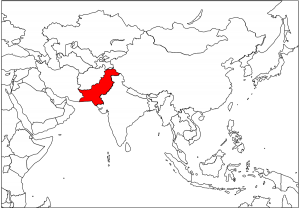 |
| Pakistan |
Background
According to the result of the assessment survey conducted on 5th July 2016, the community does not have adequate access to safe drinking water. Although there are open wells and electric pump dug wells for the community, the depth (20 to 30 feet) of wells are not deep enough to get safe water. HDPG survey team interviewed 100 members of the community and found out that the non-availability of drinking water to nearly 60 % of the village population is a potential threat for water borne diseases. The proposed project will provide them the facility to use clean drinking water from the hand pumps dug up to 80 feet.
Outputs
1) 2 wells with hand pump were constructed
2 )4 health and hygiene awareness sessions were held
3) Operation and Maintenance Committee was established
4) Water quality test was carried out
Because of these activities, the residents of Tarkha village could drink safe drinking water so that reduction of diseases caused by tainted water can be expected.
Voice from beneficiaries and HDPG
- People of the village appreciated and acknowledged JWF’s financial support to address their clean drinking water issue and were grateful to HDPG for its efforts to highlight the problems and their possible solutions. This project greatly contributed to empower the local communities to create in theme the scene of ownership.
- This project provided HDPG the opportunity to further strengthen its WASH work in the area and the office bearers benefitted on account of enhancing their skills in this sector.
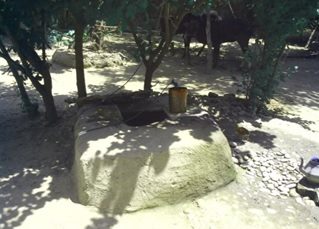 |
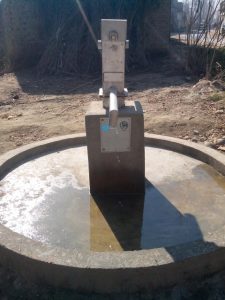 |
| Existing well in Tarkha village | Constructed well with hand pump |
3.Promote WASH in Schools through Refurbishment of Toilets & Drinking Water System and Construction of a Hand Washing Station in Rajasthan, India (India)
Outline of the project
・Organization: PHD Rural Development Foundation (PHDRDF) (#449)
・Project title: Promote WASH in Schools through Refurbishment of Toilets & Drinking Water System and Construction of a Hand Washing Station in Rajasthan, India
・Country/Area: India/Sikar District
・Project period: November 2016 to April 2017
・Number of beneficiaries (Direct and Indirect): 272 people (140 girls, 120 boys and 12 teachers) and 1,360 people
・Cost: 1,149 USD (JWF Fund 1,000 USD and contributions from PHDRDF 149 USD)
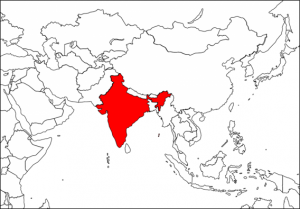 |
| India |
Background
The difficulty to access water and the low per-capita income of the district have impacted the sanitation conditions among the rural population including the schools, where existing sanitation facilities were in a deplorable condition and cannot be used by students. Poor financial resources have prevented rehabilitation of old broken sanitation structures. Students could not use the toilets because of lacking water. A lack of funds and water connection has led to its long-term neglect and excessive damage. This causes absenteeism, especially of girls. Girls had to go home to use toilets and the boys defecated in the open.
Outputs
1) Pre assessment survey was conducted
2) Existing toilets were refurbished
3) Hand washing facilities were constructed
4) Water quality test was carried out
5) WASH Committee was established
6) 2 WASH Sessions were held
7) Follow up and Feedback was carried out
Because of these activities, the school students and teachers could make use of water throughout the year so that improvement of their leaning environment can be expected.
Voice from beneficiaries
- President of school
The works done by your foundation towards refurbishment of toilets along with tile work, construction of handwashing platform, painting of hand washing steps, etc. have really benefited the school:- Students stopped open defecation and started using the toilets.
- Students started the practice of washing hands, this will lead to reduced incidences of diseases among them.
- Students are now coming to school more regularly.
- The school now looks clean surrounded by beautiful setting.
- The soak pit for waste water will help recharging the ground water instead of just going waste.
- Teacher of school
The work done by the organization in our school – of refurbishing the toilets, constructing hand washing stations and drinking water facility, has really helped the students and their attendance. The students regularly take part in the group hand washing session. The painting of hand washing steps has helped the students in properly washing their hands. The entire program activities have helped make the school look beautiful. The students use the toilets everyday now.
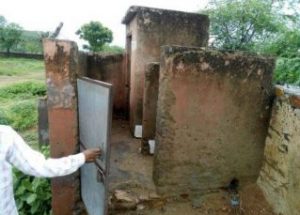 |
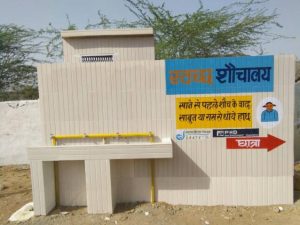 |
| Existing toilet | Refurbished toilet for girls |
4.Clean water and WASH education for the Ampandroantsiriry’ community (Madagascar)
Outline of the project
・Organization: Grassroots Climate and Livelihood Actions (GRACLIA) (#108)
・Project title: Clean water and WASH education for the Ampandroantsiriry’ community
・Country/Area: Madagascar/Antsinanana
・Project period: November 2016 to March 2017
・Number of beneficiaries: 600 people (170 women, 180 men, 250 children)
・Cost: 985.9 USD (JWF Fund 977.5 USD and contribution from beneficiaries 8.4 USD)
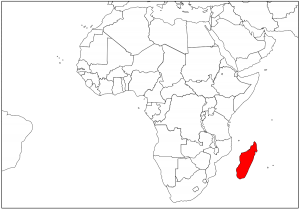 |
| Madagascar |
Background
Madagascar has approximately 22 million populations, with the majority, which represent 80% of the population, living in rural areas, where the public services and facilities are almost inexistent or to the minimum. In the village of Ampandroantsiriry, due to a lack of access to clean water for the local people, especially women and children have to walk hundreds meters from their village to nearby streams to wash their dishes and clothes, and fetch water. The stream is used by the local community as main source of water for drinking and cooking. On the other hand, addition to washing dishes and clothes, the majorities of the communities’ members defecate in the surrounding areas since there is no toilet facility. As a result the local community is exposed to infections such as cholera, diarrhea, and typhoid. Furthermore, there is a dumping site few hundred meters upstream which pollutes water stream.
Outputs
1) Village meeting was held
2) 3 hand pumps were installed
3) Water user committees were established
4) 3 workshops of Sur’eau were conducted
Because of these activities, the residents of the Ampandroantsiriry’ community could drink safe drinking water so that reduction of diseases caused by tainted water can be expected.
Voice from beneficiaries
- Mrs. Merisoa, President of water user committee
Many thanks for bringing water in our village. It is helping us a lot because it is very difficult for us to get clean water. I am getting old and it is becoming burden to me to walk to the stream every time, and the children lose lots of their daily time fetching water. Now that we have the pump near our home we are very happy, as we do not lose time going far away anymore. People are joining us in using the pump more and more and participating in paying the pump maintenance fee. - Mrs. Vero-boda, participant of workshops of Sur’eau
Many thanks for showing us how to use Sur’eau. Before that, I was afraid to use it because I thought it could give me stomach ache when mixed with the water from the river, in addition I wasn’t sure on how many days I could keep the water after they are mixed with Sur’ eau. Now all my questions were answered and thanks to you for organizing this in Ampandroantsiriry.
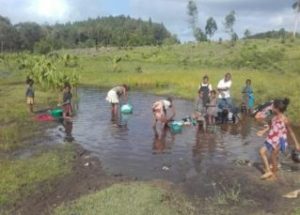 |
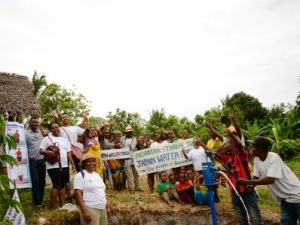 |
| Village people using water from this river | Installed hand pump with village people |
5.Construction of Rain Water Harvesting Systems and Improved Pit Latrines at Ndenyende Primary School in Tunduru district, southern Tanzania (Tanzania)
Outline of the project
・Organization: Tanzania Environment Management Catalyst (TEMACA Tanzania) (#030)
・Project title: Construction of Rain Water Harvesting Systems and Improved Pit Latrines at Ndenyende Primary School in Tunduru district, southern Tanzania
・Country/Area: Tanzania/Ruvuma
・Project period: November 2016 to April 2017
・Number of beneficiaries (Direct and Indirect): 450 pupils and 7 teachers
・Cost: 1,750 USD (JWF Fund 1,000 USD, contribution from local community 250 USD and contribution from TEMACA Tanzania 500 USD)
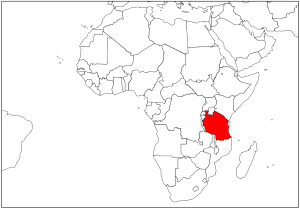 |
| Tanzania |
Background
Ndenyende village with more than 3,800 people has one primary school with more than 450 pupils of 1st through7th grade and 10 teachers.
The village and the school depend their water sources from rivers located 5 to 7 kilometers north (Nanyungu river) and south (Matikwili river). There is no fresh water at school to drink and wash hands. Few pupils carry plastic bottles for drinking water from their homes. Even the bottled water is raw and unboiled. The risk of getting waterborne diseases is very high for the pupils, which is also a main cause of school absenteeism. The school does not have any safe sanitation facility. Although there were grass-fenced toilets, using the toilets in the rainy season was danger to the pupils. Lack of water prevented them from washing hands after using the toilets. There was an urgent need to construct a rainwater harvesting infrastructure and a safe sanitation facility at school.
Output
1) Planning meeting was held
2) 4 VIP toilets were constructed
3) 7 sessions on WASH and health were held
4) Meeting on usage of the new toilets were held
5) Framework for operation and maintenance were established
Because of these activities, the school pupils and teachers could make use of proper sanitation facilities so that improvement of their leaning environment and increase of school attendance can be expected.
Voice from beneficiaries and TEMACA Tanzania
- The school pupils are happy and sending many thanks to JWFF. They are thanking a lot and praying God for long life. They are looking forward to seeing future support for the school
- TEMACA Tanzania thanks JWFF for the grant of fund and partnership to support the project.
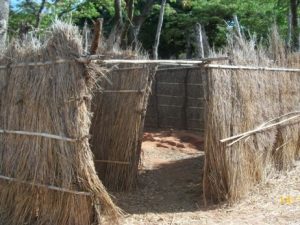 |
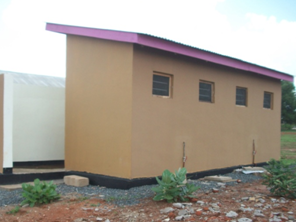 |
| Pupils using Pit latrine toilets | Constructed VIP toilets |
6.Rain water Harvesting for water conservation and dry land farming for tribal farmers (India)
Outline of the project
・Organization: PRAGATI KORAPUT (#424)
・Project title: Rain water Harvesting for water conservation and dry land farming for tribal farmers
・Country/Area: India/Koraput
・Project period: November 2016 to April 2017
・Number of beneficiaries: 18 families, 102 people
・Cost: 1,366.95 USD (JWF Fund 983 USD, contribution from community 132.35 USD, PRAGATI KORAPUT 251.5 USD and others)
 |
| India |
Background
There are 18 small and marginal farmers who have their agriculture field of 17.5 acres growing millets, vegetables and pulses during the rainy season. In addition to the shape of land sloped and undulating, due to torrential rains with intensity of 150 to 200 mm per hour, heavy runoff of rainwater causes soil erosion and damages crops of the farmers almost every year. Contrarily, with the end of monsoon rains, the lands dry up as the moisture retention capacity of the soil is very low. Due to the undulating terrain, the land is unsuitable for agriculture. Over the years, due to erosion of topsoil and infertility of land, the productivity of the land has been declining. Therefore, the farmers who own the lands are reluctant to grow crops even during the rainy season, and rather they want to work as wage laborers in the nearest town to support their living. Some of the farmers also earn their living by selling firewood and charcoals, which causes further forest destruction.
Outputs
1) Concept sharing meeting was held
2) User Group was established
3) Rainwater harvesting structure and drainage were constructed
Because of these activities, it became possible for the target farmers to cultivate crops throughout the year so that their stable earnings can be expected.
Voice from beneficiaries
- Mr. Raju Santa, a farmer who owns half acre of land
Owing to the implementation of the project, I got 21-person days of work. Though I contributed 20% of my labor cost, I could get work in my village, otherwise I would have to go to the town to look for some work. Now I will be able to grow crops throughout the year as soil moisture of my land will be improved.
- Mr. Dibakar Jani, a farmer who has land nearby constructed structure
In addition to the fact that our land is protected from soil erosion, now the rain water harvesting structure can be used by the User Group for fish farming, which will be a source of additional income for the farmers.
- Mr. Trinath Santa, a young farmer
The project made the villagers aware of the importance of rain water harvesting and conservation, which also will be expanded to nearby villages.
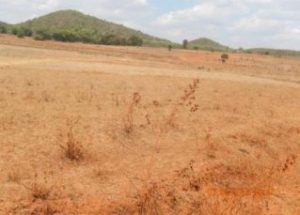 |
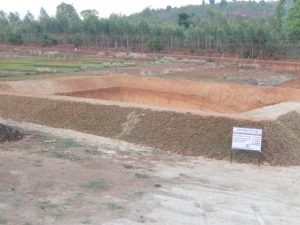 |
| Agriculture field in the dry season | Growing crops during the rainy season |
(Reported by Akie Gunji, Assistant Manager)
